| Umělec magazine 2004/2 >> Gender related art from Serbia | List of all editions. | ||||||||||||
|
|||||||||||||
Gender related art from SerbiaUmělec magazine 2004/201.02.2004 Danica Minićová | en cs |
|||||||||||||
|
There is a certain ambivalence inscribed within the term, gender related art, as I use it here to refer to art practices within the Serbian art scene that critically deals with issues of the social and political origin of gender identities and relations, but could not be called feminist. Gender related artworks from Serbia could be related to one of the most important segments of feminist art practices in general – feminist art that deals with questions of representation, investigating relations between different “technologies of gender”1 within visual culture and social formations of gender. Still, they rarely employ practices common to feminist art that strategically situates itself in public space or in community work. Departing from this ambivalence where feminist activism usually has not been a context of gender related art in Serbia, I want to investigate in which contexts gender has appeared as a subject of an artwork within the contemporary Serbian art scene.
I want to historically and discursively situate such art practices within the context of the Serbian contemporary art scene, in order to make visible and intelligible their presence throughout these years. Also, by deciphering their contexts, I want to outline perspectives for their possible interpretation in terms of their textual strategies and gender politics. There are three major frameworks where gender related artworks in Serbia operate. The first framework is informed by concrete social and political contexts, including nationalism, war, and the post-socialist transition from state to market economy. The second relevant framework for gender related art is the question of media itself, its meanings, politics, ideology – which became a matter of political positioning in the second part of the the nineties in Serbia.2 Feminist theories and academic institutions, like the Women’s Studies Center in Belgrade, create a third relevant framework. In assessing gender related art from Serbia, I focus on a limited number of artworks representative in terms of their relations to these three contexts. This is not to say that each of the works discussed refers only to one of these contexts, as all three intersect in some of them. Still, these artworks most accentuate these contexts. The Politics of Context Writing about art in Serbia in the nineties, art critics have often pointed to its withdrawal from the social sphere in the first half of this decade, and subsequent politicization in the second half of it.3 Artists, who did not want to take part in the cultural program of populist nationalism and the politics of war, situated themselves outside of state institutions dominated by political conformists. Artists in this parallel art scene generally turned to what critics call “utopian escapism,”4 dealing with formal, self-referential artistic problems or the production of intimate realities. Still, sporadic politically charged works appeared in that period as well, such as by the older generation of conceptual artists, or by younger, emerging artists who turned to street actions. Artworks by Jelica Radovanović, referred to life with nationalism and war, and gender ideologies and politics inscribed within that context. Her solo exhibition in 1992 is particularly interesting. Artworks for that exhibition were created at the beginning of the wars, and they had a strong political subtext. In an interview, the artist pointed to that context herself: “I was obsessed with disintegration of language. The war has entered to these areas through language, with the destruction of the languistic symbolic order as well and space opened for what would come after. That work deals with such phenomena, with the subtle process of the change of meanings of terms, with a slipping of language and destruction of one universe.”5 She was referring to her Rozankrantz and Guildenstern are Dead, seen as her most politically involved. It is also the first artwork (at least to my knowledge) in Serbia in that decade that critically refers to gender politics as an aspect of the war situation at the time. The artist stages her self-portrait with a baby, using numerous quotations of female allegories, the female figure as a common symbol in national political iconography, the famous historical sentence, “L’Etat, c’est moi,” written on her chest, and a title refering to marginal characters in Hamlet, and also the main protagonists of Tom Stoppard`s play… Each of these references can trigger a series of associations and together they create a density of signification, but what is important here is her intervention in to the political iconography of the nation. Symbolizing a nation with a female figure is very often a convention in political iconography, its paradigm being the French Marianne, but imagining the nation as a female is also found in expressions such as Mother homeland (Mother Russia, for example). Jelica Radovanović intervenes in this engendered visual imagery of nation by simply drawing mustaches and beard on one half of Mother homeland’s face and placing moustaches on the baby’s face as well. Drawing on a feminist analysis of imagery of nationalist gender politics, this intervention can be interpreted as referring to the exclusion of women from the nation, in all ways but as mothers. As feminist theorist Zillah Eisenstein suggests, whether nation is referred to as fatherland or motherland, it is depicted as brotherhood, never sisterhood.6 In this perspective, the artist’s intervention can be related to “a double-sexed nature”7 of nation, where a woman’s figure does not represent women, but men, therefore erasing lives of actual women from the domain of representation.8 Another relevant perspective for the interpretation of this work is informed by Lacanian psychoanalysis — an important theoretical background of this artist’s work in general, and in works done together with Dejan Andjelković. The artist this way referred to this work as dealing with the processes of disintegration and destruction of language and a certain symbolic universe that opened a space for war to come. Using this theoretical approach, Jasmina Cubrilo argues that this work refers to the political situation, in which it was created, by relating it to the feminine position (as theorized by Lacan) of absence and otherness within a patriarchal symbolic order, addressing issues of otherness in relation to language and power. This work articulates the feminine as a metaphor of difference in homogeneity of the nation, touching on the traumatic reality of violence towards others than ourselves. Looking for a Husband with an EU Passport Another work representative of gender related art that refers to a certain socio–political context, is Tanja Ostojić’s, Looking for a Husband with an EU Passport (2000). The context for this could be named after one of the relevant recent gender art events in the Balkans: Gender and Capital, a conference and exhibition curated by Suzana Milevska, in 2001 in Macedonia. The main theme of this project was defined as “the problem of the reflection of the capital on gender and sexual difference in the countries experiencing a shift from state to market economy.”9 This is reflected by the firing and unemployment of women, the elimination of maternal work-leave, trafficking in women,10 the booming sex-business, the commercialization of images of women, and the subsequent sexist media imagery.11 One aspect of this work by Tanja Ostojić can be related to issues of “politics and economy of marriage”12 within post-socialist transitions, defined in terms of West/East relations. This work was initiated as an interactive Internet project (2000) in which the artist placed an ad with the title of the work accompanied by a photograph of her naked body. The next phase included the distribution of leaflets and posters (2001, Gender and Capital, Skopje)” and a web site displaying her correspondence with ‘suitors.’ As it happened, the artist received around 500 answers from interested guys, some of whom even sent their own photos. As the artist recalls, after six months corresponding with German media artist, Klemens Golf, they met; this was organized as a public performance in front of the Museum of Contemporary Arts in Belgrade (Crossing over, 2001). “On January 9, 2002, we got officially married in Belgrade, and with an international marriage certificate I applied for permission to live in the EU. This procedure takes about eight weeks,” Danića exlains. “The next step is to get an EU passport, and I hope it won’t take more then ten years to get it.”13 The artist now lives in Duseldorff and the development of this work-in-progress is framed by her Integration Project. To gain insight into the kind of gender relations prevailing in East – West marriage rhetoric that this work refers to, it can be enlightening to simply browse through a couple of Russian Brides – Cyber Guides. As one of them says while answering a question whether Russian women’s personalities differ from Western women, “Yes, they are a bit different. They don’t have a different type of character, and they also love shopping and chatting. They are human beings and they are definitely not perfect. The main difference is that they are much more patient and can tolerate things that Western women will never be able to bear. They are more considerate and dependable. They are partners, not competitors.”14 In her work, Tanja Ostojić politicizes such an image and the position of Eastern European women in relation to Western marriage or the sex industry. Advertising her naked body, she represents it shaved, with no seductiveness and sensuality, thus creating a tension between verbal invitation and visual disturbance.15 Political conflict is suggested by this tension between the verbal and visual: between the slogan, which plays on the notions of her feminine and Eastern availability, and concentration camp aesthetics. Paralleling the aspect of gender and capital, this work literally deals with the position of an artist without an EU passport within the context of the international art scene, or more universally, of an individual with the wrong nationality. As one of her ‘suitors’ asks her in their e-mail correspondence for her reasons for such pursuit, Tanja replies, “About my situation...You asked…Since some years I have the chance to travel around Europe mostly because of exhibitions I am participating in. I am from Belgrade, but living abroad since 98. […] Well, I guess you understand... it means that wherever I want to go I have to apply for visa, and I need a lot of papers, time, nerves and money to get it. I am tired of my national identity and I want to change it. Anyway, I do not believe in national values but rather in human ones. And I feel my nationality as a label, someone else put it to me, it was not my choice, believe me...”16 Thus, public and private aspects intersect in this artwork, with both issues gender and capital and issues relating to borders and nationalities. Moreover, the relation of private to public is an important part of this artist’s work in general. Saying she wants “to construct a platform for discussion of certain social, existential and political subjects,”17 she specifies private and public aspect of artwork as one of them. Zoran Erić interprets this work as a feminist critique of the division between public and private spheres and proposes to see the strategies of this work as a deconstruction of the binary opposition of the public/private pair. In this perspective, Tanja Ostojić’s art strategies could be interpreted as constant critical shifting from the negative to the positive, “with the aim of deconstructing and transgressing the given gender, social and political constraints.”18 In my view, she succeeds in this ‘critical shift’ for several reasons. First, she manages to articulate her personal, private existence as a political one, showing power relations and political, economic and social constraints placed upon the individual along lines including sex and nationality. She then draws attention to it by making it all a public matter. Throughout this process, she assumes active agency by placing an ad, corresponding, choosing a husband and monitoring the integration of the project. In the end, along with public display of procedures of political exclusions constraining her private life, she cynically employs these same procedures to acquire that from which they are excluding her. Eventually and with hope, she will obtain this privileged citizenship. It’s probably worth the effort; not insignificantly it is all real, not just a critical textual interplay. The Medium is the Message In the second half of the nineties, this parallel art scene was marked by a double turn: to its social and political context and to new media (meaning multimedia, electronic and digital art). As Stevan Vuković remarked, these two shifts paralleled each other, with a number of artists turning from classical painting and sculpture to video, digital media and performance art, along with a politicization in terms of artwork subject.19 Vuković relates the first shift to a change of reality paradigms within the art scene, as a turn from an escapist model to a possibility of “a new construction of reality made of the materials of the virtual and the imaginary,”20 tracing it to the work of the New Moment Magazine and the Center for Contemporary Art. Exhibitions within this framework re-conceptualized art practice as “one of the potential generators of subversive discourse”21 in competition for mediation/construction of reality. Following this interpretation, it can be further remarked that these two changes – in subject and media of artworks – were interrelated by their common theoretical grounding in post-structuralist notions of reality, that created a possibility for politicization of the medium itself. In addition to theory, they were linked by their political background too, as the relation to new media became a sign of political differentiation in opposition to national art institutions and their conservative inclination towards traditional media. A Picture A work by Jelena Radić, Picture, although dating from 2002, relates to this discursive and political framework and articulates issues of gender and body formation within its boundaries. This work was situated within such media discourse both in relation to its own concept and in the way it was represented in the context of art institutions like the Academy of Fine Arts and the October Salon (an annual state exhibition with a long tradition and representative character). At the Academy, this work was associated with Flu_ID, a project promoting young artists’ works working with new media, designed by a few professors22 as an alternative to the traditional curriculum. That same year the work was also in the October Salon, another art institution where the question of media means conflicts, and won a prize. With respect to this politics of new media in relation to art institutions, it is worth mentioning that Picture, as a new media artwork, was actually an oil painting. It is a conceptual work that deals with the process of media transformation and meanings implied by different media. The artist’s starting point is an image from the Tampax tampon manual with instructions how to use the product using the following steps: the scanning of a picture; enlargement of the picture using a computer program; the new printing of the digitally processed picture; painting it according to the printed pattern.23 In her dissertation, Manual for the Reading of a Picture Copied from a Manual, the artist comments on the consequences of this processing. Initial scanning translated an image into numbers resulting in the decomposition of the image dissolved into pixels. The subsequent enlargement along with a reduction in resolution created further image decomposition. After this, the digitally processed picture was printed. It was “set on the canvas, and the Picture was copied directly from the print, square-by-square, line-by-line,”24 using traditional oil painting as media. Playing with the words – picture, image, painting – the artist suggests possible readings of relations between them: “With this last step in a producing of this work a certain excess arose, which can be perceived in the quantity of expended handwork – it never had to be painted, it could exist in the media of print. Here, painting is an excess that dialectically binds the scheme of the computer print (made out of pixels) and the content of the picture (a manual) personifying it completely by its characteristics as a media. Stroke of a brush and pixel, diametrically opposed in their chronological historical media usage, the first marked as completely traditional, and the second one as the most contemporary media, in this case coexist in a perfect equilibrium, they could not survive without each other; at the same time they deconstruct and construct the picture. They unite and separate two phenomena that are combined in picture – the content (image) and the media (painting).”25 This is where gender issues come into play. The artist compares the tension between two media – a digitally processed picture and an oil painting – to a parallel contrast between the content of the picture and the visual effect of horizontal and vertical brush strokes. The image from the Tampax manual, as a part of everyday life of the contemporary woman, is contrasted with the imitation of the texture of weaving — a traditional media that has been part of women’s daily life in the past. The discourse of media, as conceptualized in this work, can also be interpreted in relation to questions of representation of the female body and its embodiment. By juxtaposing the excessive embodiment of an abstract computer scheme in oil painting of fleshiness to the trivial motif from the Tampax manual, this work creates a framework for questioning the status of bodily realities and their mediated character. Their interplay brings together sophisticated questions of mediation and embodiment with the commonplace of instructive gender/sex practices in a woman’s life, pointing thus in an unpretentious way to the disciplinary processes of the sexed/gendered body formation. The last gender aspect of this work relates to the very motif depicted, and to something funny that happened during the work’s public exhibition. It was revealed that many men have no clue about what that object is that she puts into her vagina. The most vivid example of this was a polemic in the cultural section of a serious right-wing political magazine, NIN, that discussed this work. In a review of the October Salon, NIN art critic Djordje Kadijević criticized a couple of previous salons for privileging new media, in a malicious way, referring to “… a cultural lobby that is in so called harmony with the need for general change of the cultural system in transitional societies that (should) go to the “world,” which was offering “world” patterns of art whose specific symbols were new or expended media.”26 After writing positively about slight improvements in the Salon, where selectors declared themselves in opposition, Kadijević proceeded with a critique of Jelena Radić’s Picture, that won a prize at this exhibition. After a few formalistic comments on “this painting,”27 the critic turned to a “bizarre motif.”28 Guessing what it might be, he described a “mysterious erotic action.”29 In the next issue, a reaction was published by Branislav Dimitrijević, founding director of the Center for Contemporary Art, who explained to Kadijević that the said motif was in fact a tampon. He wrote that it is “a product of civilization’s progress that contemporary women use ‘a little more often than once a month.’”30 Suddenly, questions of civilization’s progress and politically engaged conflicts around traditional and new media were being debated in relation to the question: do male art critics know what a tampon is when they see it depicted? Kadijević’s answer was hilarious. In order to prove his knowledge about tampons, he cited art history. Showing his knowledge of another painting with a motif of a tampon, he nearly accused Radić of plagiarism. Furthermore, he turned the focus of his cultural ignorance of tampons into Dimitrijević’s ignorance of art history in the medium of painting. By activating a web of relations between the civilization aspect of ‘high art,’ media discourse and patriarchal taboos about woman’s sexuality with respect to a trivial part of everyday life, such as tampons, Picture thus appears to be an artwork that amusingly opens the eyes of at least a few men. Feminist Academia The third relevant context for gender-related art in Serbia is that which is informed by feminist theories and concepts. As a consequence of the well-known events in Serbia, these theories were not introduced to the academic scene through state academic institutions, but through alternative ones. The founding of NGOs as alternative educational institutions became essential to fill gaps in the “curricula of the state-owned universities [that] still lean heavily upon the traditional discipline-oriented scheme.”31 Gender and Culture Studies programs were a part of this new curriculum and in the second half of the nineties, it became common for students of Belgrade University to attend some of these one-year educational programs along with their studies. The most important ones with respect to feminist theories included the Women’s Studies Center in Belgrade, the Cultural and Gender Studies program at AAEN, and the School for History and Theory of Images (CCA). Two artworks, Lucky Couples (2003) by Maja Rakocević and Everything Shines Here (2003) by Jelena Radić, appear in this environment where gender has already been identified as a possible subject for art, theory and popular culture. Recently, gender-related art practices have been proliferating, and these artworks represent this trend, focusing on feminist ideas — sex/gender as culturally constructed, gender as representation, engendered visual imagery. Their detachment from any specific social – political context distinguishes them. Their points of departure include personal experience, feminist ideas already present in academic circles and popular culture, and contemporary awareness of the media reality we live in. The interest these artworks have in common lies in exploring the relationship between the (female) body and its image, female identity and screen — topics with a long history in feminist theory and art. At her solo show, Lucky Couples,32 Maja Rakocević exhibited a series of staged photo-remakes of romance posters and ads, using herself and different guys featuring romantic couples, along with a video record of this photo session. In a personally involved manner, this artist deals with her experience of the gaps distinguishing mass media, romantic fiction and her expectations in contrast to her actual relationships and gender relations in her surroundings. Her point is not one of rejecting such fantasies, but more an introspective one: she is investigating how to deal with this gap. This work is also a project of living these fantasies out, even if staged, and a kind of romantic exorcism in the safe space of play where our inadequacy to embody perfect happiness turns into irony towards such demands. In Everything Shines Here, Jelena Radić creates a home video involving her 8-year-old cousin performing choreography of her own devising, watching herself on the camera display while performing choreography. The artist’s choice of situation of rhythmic gymnastics performance gives feminine movements the context of sport and theatre and articulates sex as exercise and stage. The web of relations involving the girl, the choreography and the screen constitutes the plot of this work. While dancing, the girl focuses on the camera, fascinated by her own image. She uses the camera as a mirror, a screen and as a place for the ideal image of the body. This video addresses the disciplinary processes of formation of the body and its sex, and questions relations between the body and the image of its ideal. These two artworks operate in the space of ambiguous feminism, drawing on key feminist concepts and concerns with women’s experiences, but they don’t recognize the experiences as political ones. This paradoxical space is created by contradictory meanings that gender issues have even within art and academic contexts. Although basic feminist ideas, such as gender (and sex) as socially constructed, political aspects of the private sphere, are present on the academic and art scenes in Serbia – if not in an explicit manner, then in the domain of half-baked knowledge, thus does not mean that gender is accepted as one of the key terms of feminist political agenda. Connotations of gender are more exotic and frivolous ones, with reference to something that has to do with rebellious women and their sexuality. It is appreciated too, as a part of an academic standard, something that one should be informed about. On the other hand, feminism is still a pejorative term and an uneasy label. It is in this ambivalence of accepting gender, but rejecting feminism that these artworks situate themselves. While Gender is already in fashion, feminism remains a negatively charged term. Gender as fashion plays a part in today’s notion of the artist as a ‘social worker’ who mediates experiences of the oppressed and stirs power relations using art as activism. Consequently, its reputation is often related to the bureaucratic language of project proposals and the fashions of (Western) foundations. On the other hand, the critique of gender as a fashion serves as a good argument to resist and oppose feminist (art) activism in itself. Both of these aspects create a paradoxical space of restricted feminism that frames such gender related art. In order to negotiate these paradoxical meanings that gender issues have, these works avoid labeling, but the context is lost along way. On the other hand – with regard to the question of political agency – being free from the feminist label and drawing on individual experience, maybe makes them more appealing for the empathy of the viewers. Mapping Out By delineating contexts that are in my opinion relevant for understanding gender related art in Serbia, its history is inscribed within the recent course of the Serbian art scene and some of the discursive referent points for its interpretation are mapped out. The suggested map links gender-related art to actual political contexts at the time (nationalism or non-EU-EU relations), media politics within the art scene (in a broader sense too), and feminist theory and academic institutions. As more artists and art events that deal with issues of gender, body and sexuality appear, this mapping out will be necessary both as historical account of the already existing body of material in the field, and as way of organizing tools for a critical approach to such practices. Moving from the map outlined here to the present moment concerning gender related art in Serbia, future research in the field is in relation to the following issues: emerging gay and queer cultural activism, questioning the contemporary political context with respect to gender, and investigating reasons for the common gap between gender related art and activist women’s groups. Notes: 1. Liesbet van Zoonen, Feminist Media Studies, Routledge, 1994, p. 40 2. Stevan Vuković, “Politics, Art and Problems with Reality”, Balkan Umbrella, No. 1, October 2001, Remont – independent artistic association, Belgrade, p. 19 3. Jasmina Cubrilo, Beogradska umetnicka scena devedesetih, Radio B92, Beograd, 1998; Stevan Vuković, “Politics, Art and Problems with Reality”, Balkan Umbrella, No. 1, October 2001, Remont – independent artistic association, Belgrade, p. 19; Zoran Eric, “Personal Space – Public Body”, http://www.mi2.hr/~zblace/artefact/web_issue01/01_11_en_Ostojic.html 4. ibid, p. 12 5. Zoran L. Bozović, Likovna umetnost 80-tih I 90-tih u Beogradu, Razgovori, Ed. Jasmina Cubrilo, Remont – independent artistic association and Beopolis, Beograd, 2001, p. 61 6. Zillah Eisenstein, Hatreds, p. 51. 7. Jasmina Cubrilo, Beogradska umetnicka scena devedesetih, Radio B92, Beograd, 1998, p. 128 8. Rada Iveković, “(Ne)predstavljivost zenskog u simbolickoj ekonomiji: Zene, nacija I rat nakon 1989. Godine”, In: Zene, slike, izmisljaji, Ed. Branka Arsic, Centar za zenske studije, Beograd, 2000 9. Catalogue of Capital and Gender, Ed. Suzana Milevska, Museum of the City of Skopje, 2001, p. 93 10. Suzana Milevska, “Introduction”, In: Catalogue of Capital and Gender, Ed. Suzana Milevska, Museum of the City of Skopje, 2001, p. 7 11. Despina Angelovska, “Transition trouble”, In: Catalogue of Capital and Gender, Ed. Suzana Milevska, Museum of the City of Skopje, 2001, pp. 75-76 12. Suzana Milevska, “Introduction”, In: Catalogue of Capital and Gender, Ed. Suzana Milevsska, Museum of the City of Skopje, p. 8 13. Tanja Ostojic, http://www.kultur.at/howl/tanja/ 14. http://www.womenrussia.com/faq.htm 15. As Suzana Milevska has remarked in her text “Spectacle of Invisible”,NU, Nordic Art Review, VOL. III No. 5/2001 (pp. 60-61) 16. Re: Looking for a husband; with EU passsport, http://www.cac.org.mk/capital/projects/tanja/tanja.swf 17. http://www.scca.org.mk/capital/projects/tanja/l_to.asp 18. Zoran Eric, “Personal Space – Public Body”, http://www.mi2.hr/~zblace/artefact/web_issue01/01_11_en_Ostojic.html 19 Stevan Vuković, “Politics, Art and Problems with Reality”, Balkan Umbrella, No. 1, October 2001, Remont – independent artistic association, Belgrade, p.19 20. ibid., reference to Dejan Sretenovic`s exhibtion “Petlja” 21. ibid., p. 18 22. Dragan V. Jovanović, Zoran Todorović, Dejan Grba 23. Jelena Radić, Diploma paper The Manual for the Reading of the Picture Copied from a Manual, 2002, Academy of Fine Arts, Belgrade 24. ibid. 25. ibid. 26. Djordje Kadijević, “Konsenzus”, NIN No. 2708, 2002, Belgrade 27. ibid. 28. ibid. 29. ibid. 30. Branislava Dimitrijevićová, “Civiliacijski proizvod,” NIN, No. 2710, 2002, Belgrade. 31. http://www.aaen.edu.yu/english/mainpagesem/history.html 32. House of Youth Gallery, Belgrade, April, 2003
01.02.2004
Recommended articles
|
|||||||||||||
|
04.02.2020 10:17
Letošní 50. ročník Art Basel přilákal celkem 93 000 návštěvníků a sběratelů z 80 zemí světa. 290 prémiových galerií představilo umělecká díla od počátku 20. století až po současnost. Hlavní sektor přehlídky, tradičně v prvním patře výstavního prostoru, představil 232 předních galerií z celého světa nabízející umění nejvyšší kvality. Veletrh ukázal vzestupný trend prodeje prostřednictvím galerií jak soukromým sbírkám, tak i institucím. Kromě hlavního veletrhu stály za návštěvu i ty přidružené: Volta, Liste a Photo Basel, k tomu doprovodné programy a výstavy v místních institucích, které kvalitou daleko přesahují hranice města tj. Kunsthalle Basel, Kunstmuseum, Tinguely muzeum nebo Fondation Beyeler.
|







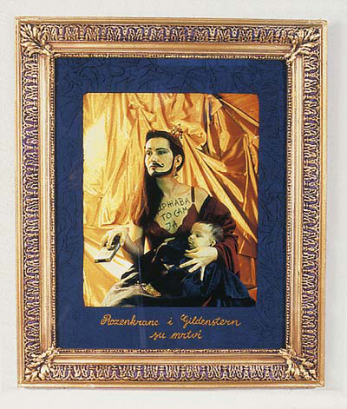
















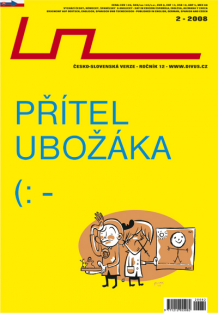




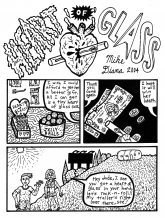
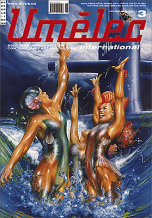
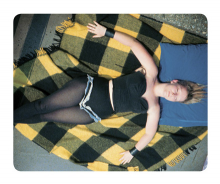
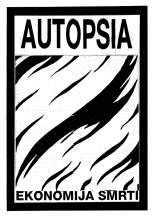


 New book by I.M.Jirous in English at our online bookshop.
New book by I.M.Jirous in English at our online bookshop.
Comments
There are currently no comments.Add new comment